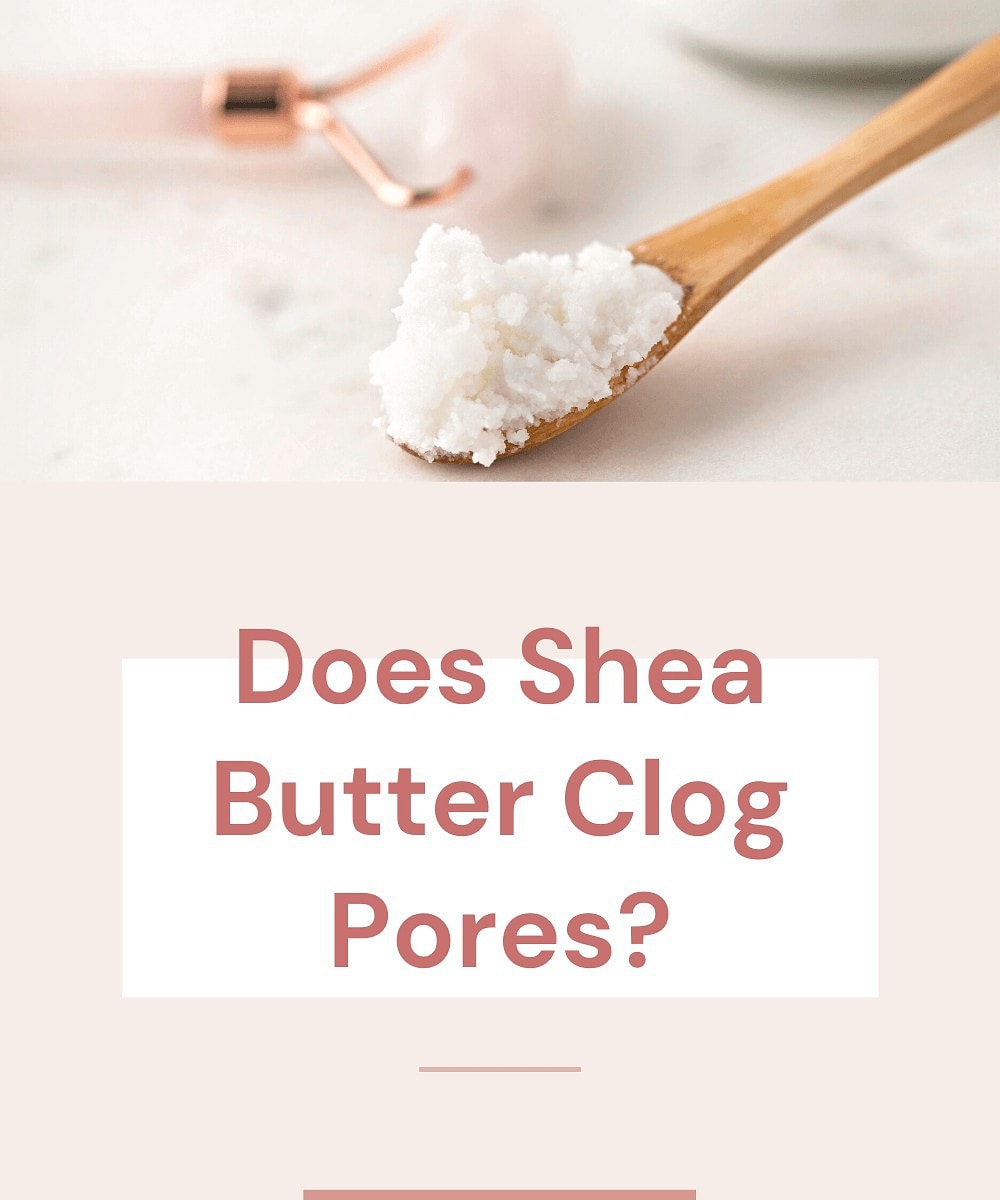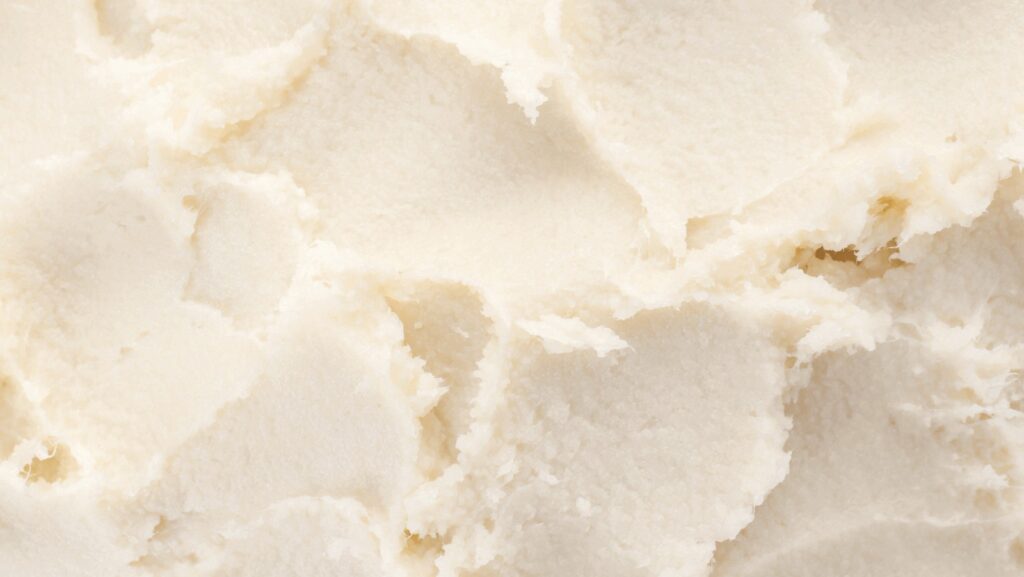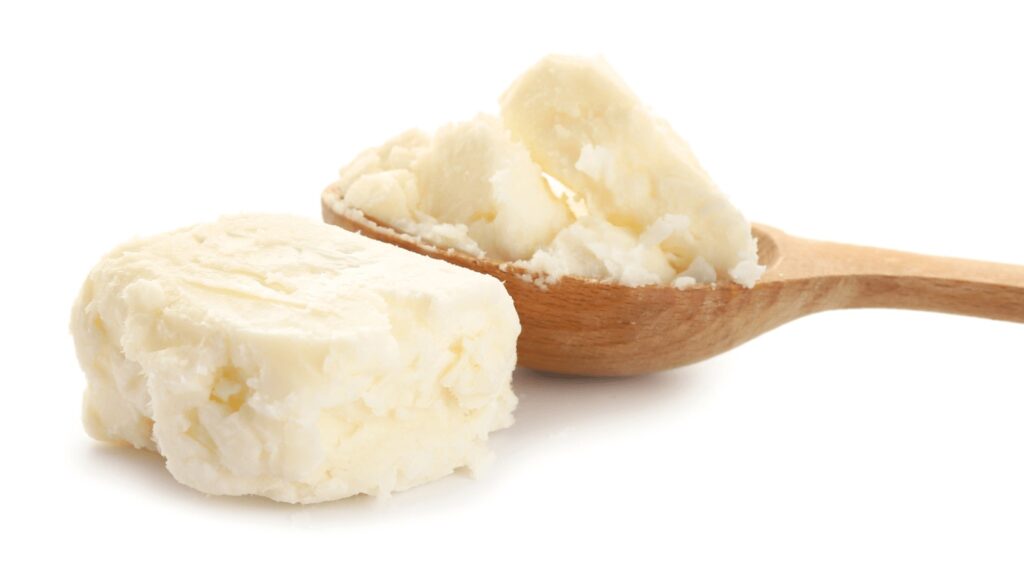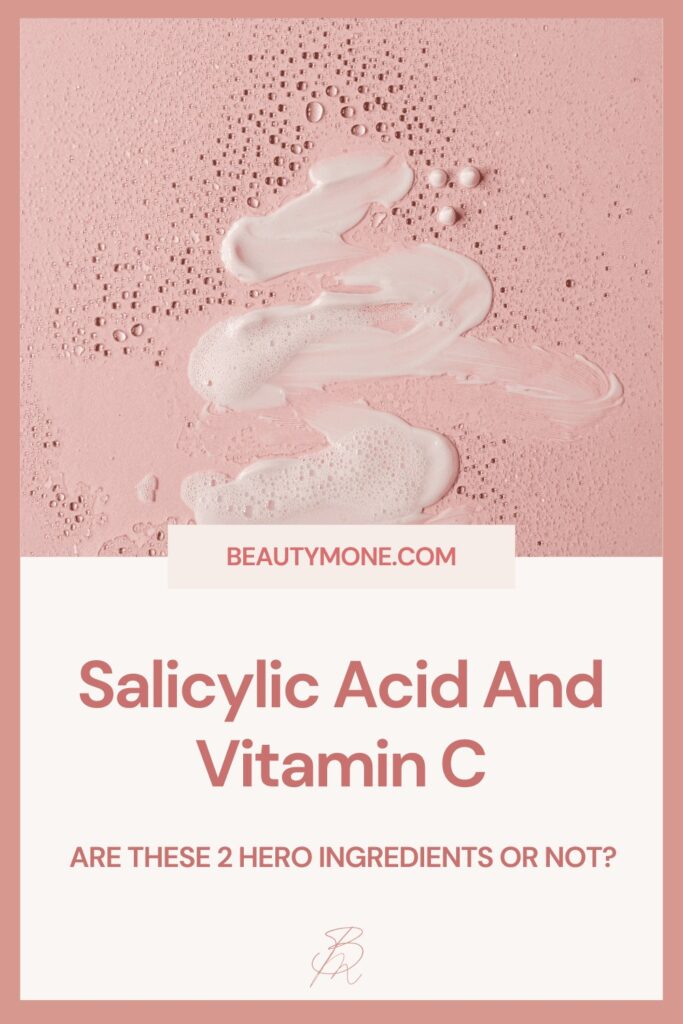
Shea butter has been named an absolute miracle ingredient by some in recent years. That is no surprise, given its many and varied benefits- and its status as an environmentally sustainable and ethically-produced ingredient.
However, for the acne-prone, you may wonder: Is it comedogenic? Does shea butter clog pores? Others might just be thinking: Comedo-what-now?
Don’t you worry. I’m here to give you all of the answers on shea butter and its pore-clogging potential. Keep reading below to find out!
What Does Comedogenic/Non-Comedogenic Mean?
Comedone is the technical term for ‘blackhead,’ derived from the Latin term “to swell.” Comedones are pores clogged with oil, dead skin, bacteria, or other pollutants.
Comedogenic, then, refers to an ingredient’s likelihood of clogging pores, which increases the likelihood of breakouts! It doesn’t mean that you will definitely have adverse effects from using a comedogenic ingredient, but the probability for some skin types is higher.
Particularly if you have combination or oily skin, you will want to be wary of ingredients with high comedogenicity.
Comedogenic ingredients are not all bad. Many natural ingredients, such as coconut oil and linseed oil, have a place on the comedogenicity scale. However, such ingredients can still be full of essential fatty acids and deeply nourishing, despite this apparent disadvantage!
Read more about comedogenic: What Does Non-Comedogenic Mean.
Is Shea Butter Comedogenic?

Shea butter is not classed as comedogenic; this means that shea butter doesn’t clog pores.
However, it is thick in consistency and– being butter- is a naturally oily substance. For these reasons, you should generally avoid the application of pure shea butter to your face. If it is an ingredient in a moisturizer specifically designed for this purpose, then go for it!
Just beware of excess oiliness and the adverse effects this may have, particularly on acne-prone skin.
Pores become clogged with bacteria, which can then grow and create breakouts. What’s great about shea butter (and it prevents it from pore-clogging) is its potent antibacterial properties.
What Is Shea Butter?
Shea butter is extracted from the nuts of the Vitellaria Paradoxa, or the shea tree, which is native to the Sahel region of Western Africa. Most shea butter still comes from the region, particularly Nigeria, Ghana, and Burkina Faso.
Shea butter is a naturally renewable raw material, mainly sourced from wild trees and agroforestry parklands, which means it is an environmentally-sustainable ingredient. Shea nuts are collected by-in-large by women, and it has become key to the economic stability of the region, particularly for women’s economic equality. This has earned shea nuts and butter the name “women’s gold.”
Cooperatives are increasingly organizing labor in this industry, and fair trade organizations regulate Shea Butter to ensure that it is produced ethically. This means producers get a fair price for their work, and pickers are paid fairly.
The Global Shea Alliance works with these communities and women’s groups to promote ethical, sustainable, and finance-effective practices. Shea butter is a solid fat at room temperature and comes in the form of shea butter or shea butter oil.
It is best used as an ingredient in a moisturizer, in which it is blended with other ingredients to make it more user-friendly. Shea butter contains a myriad of fatty acids that are incredibly beneficial when applied to the skin. These include oleic acid, vitamin E, vitamin A, Vitamin D, allantoin, and phytosterols.
Oleic acid promotes skin cell production and, with that, the repair of damaged skin. It also has anti-inflammatory properties and helps to balance out the skin. Allantoin treats hyperpigmentation and is particularly beneficial in preventing fine lines and wrinkles. Phytosterols, on the other hand, protect against UV radiation and fight inflammation as well.
With all these miraculous components, it’s no wonder that shea butter is such a skincare hero!
Check out other skincare ingredients here: Skincare Ingredients A-Z.
The Benefits of Shea Butter
Shea butter is absorbed deeply into the skin’s layers and naturally hydrates. It is one of the best moisturizing ingredients in skincare products, promoting plump and ultra-soft skin.
Its natural protective properties and thick consistency will increase sun safety, though it should not completely replace SPF protective products. It’s important always to wear a sun protection lotion of at least SPF 15+!
Shea butter is an excellent healing ingredient if you have scarring from acne, stretch marks, or other skin damage. It also soothes and repairs sunburn and skin conditions like psoriasis. As shea butter contains vitamin C, it is a highly effective anti-aging ingredient. Vitamin C promotes collagen production, which makes the skin appear plump, youthful, and glowy.
It is also proven to fight against environmental stressors and free radicals, such as air pollution and UV radiation, which affect your skin. These stressors can accelerate aging, including the increased appearance of fine lines and wrinkles. Another component, Vitamin E, actively softens the skin and works to retain moisture by strengthening the epidermis.

Is Shea Butter Good For Acne?
Shea butter is known for its ability to repair scarring and reduce inflammation. For this reason, it can be a great ingredient to add to your skincare routine if you suffer from discoloration caused by past acne. It will also soothe mosquito bites or other such inflammatory ails.
Shea butter has also been shown to contain antibacterial properties. This makes it incredibly effective for treating acne as it fights the bacteria that fester in pores and leads to breakouts. It is this precise quality that makes shea butter non-comedogenic.
However, the application of shea butter to acne-prone facial skin should be minimal and carried out with caution.
The thick consistency of shea butter makes it less suitable for facial application and rather more appropriate to use on the rest of the body.
The Side Effects of Shea Butter
Shea butter is a safe ingredient that does not pose many potential risks. However, there are a few things we’ve identified below that you should consider before using the product.
People with tree nut allergies will want to be very wary of shea butter. If there is any chance you may have a tree nut allergy, you will want to consult a medical professional first (or simply avoid it altogether!).
It’s certainly a natural ingredient, but the refining process that turns raw shea butter into the usable ingredient that we know and loves often involves some less loveable substances.
N-hexane is one of these undesirable byproducts. However, coming into contact with this substance by applying shea butter to your skin is highly unlikely.
Even so, if you start to feel an onset of drowsiness, headaches, or muscle weakness after application, you should discontinue use and consult a medical professional immediately.
Shea butter has been subjected to limited testing, which means there is potential for undiscovered ill effects and benefits.
Best Suited Skin Types for Shea Butter
Shea butter is a safe ingredient for all skin types except those with tree nut allergies!
However, if you have a combination to oily skin, you may not benefit from the excess oiliness shea butter will add to your skin.
On the other hand, this is a great benefit for skin that tends to be dry and in need of some extra hydration.
Sensitive and dry skin is at higher risk of damage from UV radiation and other environmental stressors, so shea butter will do wonders to counter this.
If you are in your later years, shea butter will also provide a host of benefits to counter signs of aging. Its hydrating effects will leave your skin looking supple, youthful, and free of fine lines and wrinkles. Prolonged usage can also help to repair the signs of dark spots caused by exposure to the sun!
Final Thoughts: Does Shea Butter Clog Pores?
To answer the question posed at the beginning of this article: Shea butter is non-comedogenic.
This ingredient provides a great range of skincare benefits that will improve your skin’s hydration, coloration, and tone- and prevent signs of aging!
However, due to the nature of the substance, I recommend that you keep the facial application of shea butter in its pure form to a minimum.
Pure shea butter and shea butter oil are best used on the rest of the body.
If mixed with other ingredients in a moisturizer or serum specifically designed for the face, you can safely go ahead and allow your face to bask in the miracle that is shea butter as well!
FAQ
Sources – Further Reading
Bockel, L., Veyrier, M., Gopal, P., Adu, A. and Ouedraogo, A. ” Shea value chain as a key pro-poor carbon fixing engine in West Africa.” Accra, 2020, FAO and Global Shea Alliance.
Ameh, A. O., et al. (2016). “Synthesis and characterization of antiseptic soap from neem oil and shea butter oil” in African Journal of Biotechnology https://www.ajol.info/index.php/ajb/article/view/133899
Rattanawiwatpong P, Wanitphakdeedecha R, Bumrungpert A, Maiprasert M. ‘Anti-aging and brightening effects of a topical treatment containing vitamin C, vitamin E, and raspberry leaf cell culture extract: A split-face, randomized controlled trial’, J Cosmet Dermatol. 2020 March 19.
Does Shea Butter Clog Pores? Here’s The Truth – Sources.
Show more +

